We hear how Herschel witnessed the birth of stars in this NewsFlash, as well as exploring the Neanderthal genome and finding out why washing your hands can alter the way you think. Plus, deciphering the second genetic code - how alternative splicing means the same genes can code for many products...
In this episode
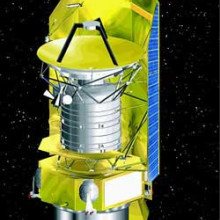
00:17 - Herschel sees super-massive stars forming
Herschel sees super-massive stars forming
The recently-launched Herschel space telescope has revealed a new way in which massive stars might form.
Stars are the major building block of the Universe, and our star - the Sun - powers almost all the life on Earth, so understanding the workings of the Sun and other stars like it is very important.

(c) NASA' alt='Artist's impression of the Herschel Space Observatory' >One big problem is that, according to present theories, stars shouldn't get bigger than 8 times the mass of the Sun. This is because the light they produce should blow away the surrounding material before it can become part of the star. Nevertheless, there are many stars of this size in the galaxy, so space scientists know that there must be a piece of the puzzle missing. But investigating this sort of problem has been difficult until now because young stars are surrounded by clouds of opaque dust and gas, which obscure our ability to see what's going on.
However, in May 2009, the European space telescope Herschel was launched. It is the largest space telescope ever deployed and is equipped with a 3.5m mirror and is set up to study the the Infra Red region of the spectrum. This means that it can see straight through the dust that has hampered earlier attempts to witness the births of new stars and it can also see objects that are relatively cool, which means that it can peer into the deepest recesses of space where new stars are forming.
Recently, Herschel spotted a "bubble" of hot gas that is expanding supersonically through a cloud of gas and dust, producing a high density shock wave at the surface. Intriguingly, on this surface, a star is beginning to form and already has a mass of between eight and ten times that of the Sun and is still growing. Shock waves like this might therefore be the way that these stars form.
Herschel has also been sending back beautiful pictures of stars forming in stellar nurseries and galaxies forming stars in the early universe. There should me much more to come.
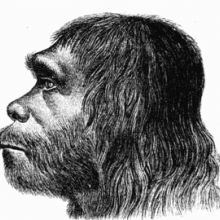
02:29 - Meet our Neanderthal ancestors
Meet our Neanderthal ancestors
A couple of weeks ago on the show we discussed the science of archaeogenetics - unravelling the mysteries of the past in our genes. This week there's been an important step forward in the field, with the sequencing of the Neanderthal genome, published in the journal Science. The new research helps to answer some puzzles, such as did humans and Neanderthals ever mate, and how many genes we share.
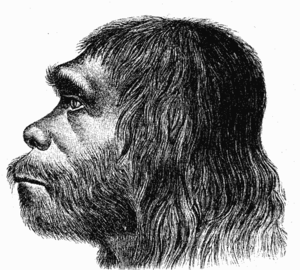 The scientists used samples of bones from three female Neanderthals who lived in Croatia more than 38,000 years ago. Then they used the latest DNA sequencing technology to sequence the DNA and build a composite genome - they've got around 1.3-fold coverage, although around a third of the genome is still a bit unclear. Then came the fun stuff - comparing the Neanderthal sequence to the genomes of humans living in different parts of the world today.
The scientists used samples of bones from three female Neanderthals who lived in Croatia more than 38,000 years ago. Then they used the latest DNA sequencing technology to sequence the DNA and build a composite genome - they've got around 1.3-fold coverage, although around a third of the genome is still a bit unclear. Then came the fun stuff - comparing the Neanderthal sequence to the genomes of humans living in different parts of the world today.
Intriguingly, the team, led by Svante Paabo from Germany, discovered that modern Europeans and Asians share between 1 and 4 per cent of their DNA with Neanderthals - but Africans don't. This tell us that any interbreeding between us and them happened after modern humans had left Africa, but before they spread across Asia and Europe, perhaps around 30,000 to 45,000 years ago - maybe even as early as 80,p000 years ago in the Middle East. So many people in Europe and Asia have a small but significant Neanderthal component in their genes - including Paabo himself.
The scientists have been comparing the Neanderthal genes with those of present-day humans to try and find the key genes that make us modern - we are around 99.84 per cent identical, but there are some crucial differences. At the moment the significance of the results isn't completely clear, but there are a number of intriguing differences in genes involved in metabolism, skin, bones and brain development, but we don't know how these relate to physical properties.
The research also allows us to speculate a bit as to how Neanderthals and humans might have interacted together. The researchers think that just a few Neanderthals infiltrated a group of humans, and started interbreeding, rather than a mass mixing of the two species. We don't know why they kept themselves mostly separate, now that we know there was no biological barrier to interbreeding - perhaps there were significant cultural differences? For now, there's still a lot more work and analysis to do, but this new genome gives us an intriguing look into our genetic past. And maybe many of us have a little bit more Neanderthal in us than we might have thought.
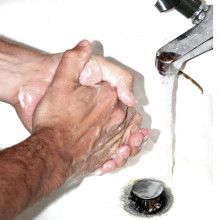
05:31 - Wash your hands, wash away doubt
Wash your hands, wash away doubt
Pontius Pilate is probably the most famous person to have washed his hands of a problem, but new research suggests that the act goes beyond just the metaphorical: scientists in the US have found that washing hands can alter the decisions we make about something subsequently!
 Michigan researchers Spike Lee and Norbert Schwarz, writing in Science, initially asked 40 undergraduates to take part in a "consumer survey" and browse through 30 CDs, selecting their favourite ten and ranking them in order of preference. They were then told that they could choose between either the fifth or sixth CD in their order and keep their selection as a reward for their cooperation.
Michigan researchers Spike Lee and Norbert Schwarz, writing in Science, initially asked 40 undergraduates to take part in a "consumer survey" and browse through 30 CDs, selecting their favourite ten and ranking them in order of preference. They were then told that they could choose between either the fifth or sixth CD in their order and keep their selection as a reward for their cooperation.
But before they took their rewards they were first asked to also rate some soap; half the students were told just to look at the soap in the bottle, the other half were also asked to use it. They were then re-presented with the ten original CDs and asked to rank them again, including choosing which of the two they would prefer to keep. Incredibly, those who had not washed their hands clung vigorously to their original preferences, viewing the chosen CD as much more attractive than the one they'd rejected. But amongst the students who had meanwhile washed their hands, this effect evaporated alongside the soap, with the subjects showing much less of a preference for one CD over the other.
The researchers then replicated the result using a second experiment on the taste of jam! This time 85 students were shown pictures of four different fruit jams and asked to pick one from two offered jars as a reward for taking part. Then they were asked, ostensibly as part of a consumer survey, either to examine an antiseptic wipe, or to physically use the wipe, before indicating on a scale of 1 to 10, how tasty each of the two jams - the one they'd previously picked and the one they'd rejected - would taste.
The participants who didn't clean their hands expected their chosen jam to taste significantly nicer than the one they had previously rejected. But for subjects who used the wipe this difference went away.
These fascinating findings suggest that hand washing has impacts beyond just the moral domain. In some way it can erase the traces of previous decisions, preventing us from loading judgements to justify the choices we have made. So next time you're faced with a difficult decision, wash your hands to wash away your prior prejudices, before finally making up your mind!
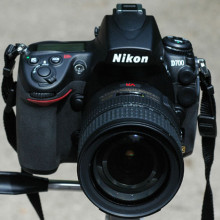
08:24 - Taking photos through opaque objects
Taking photos through opaque objects
Something which has always tantalised many people ranging from surveillance agencies to the more dubious parts of society is being able to see through opaque objects. If the object absorbs all the light hitting it then this is impossible but if an object is translucent, and scatters light in lots of random directions mixing up the image so much it is impossible for our eyes to decode it, but in theory none of the information about what is behind it is lost.
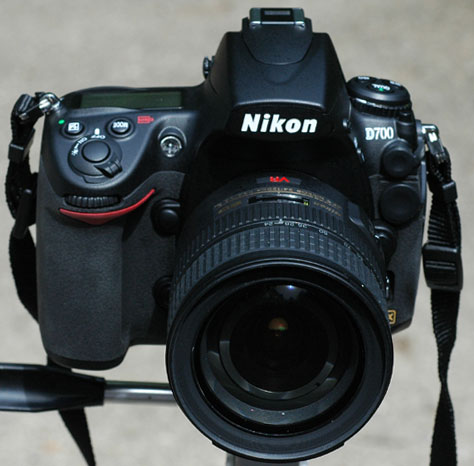 Sebastian Popoff and collegues at the Langevin Institute in Paris have worked out a way of getting this information back. They have managed to see through a slide covered with zinc oxide particles which to your eyes look white. They have done it by first shining a series of carefully calibrated laser pulses through the slide, and working out what patterns these produce on a camera sensor. From this they can work out what effect the slide is happening on the light, so when they put an object behind the slide, the pattern will change and they can work out from this change in pattern what the object looked like.
Sebastian Popoff and collegues at the Langevin Institute in Paris have worked out a way of getting this information back. They have managed to see through a slide covered with zinc oxide particles which to your eyes look white. They have done it by first shining a series of carefully calibrated laser pulses through the slide, and working out what patterns these produce on a camera sensor. From this they can work out what effect the slide is happening on the light, so when they put an object behind the slide, the pattern will change and they can work out from this change in pattern what the object looked like.
This is certainly not going to let us see through a wall, and seeing through frosted glass is still very difficult without a lot of careful setup and illumination, but it may be useful in the short term for seeing through an opaque sample in a microscope, and it has been suggested that the same technique could make a white wall behave like a mirror.
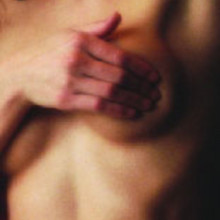
10:03 - Untangling triple negative breast cancer
Untangling triple negative breast cancer
Breast cancer survival is a real success story for science - now around 80 per cent of women survive for at least five years, compared with just half back in the 70s. But most of this success is in cancers that are fuelled by female hormones, which can be treated with hormone-blocking drugs, or by the HER-2 receptor, which can be blocked with the drug Herceptin. But there are also so-called "triple negative" cancers, which are much harder to treat, where survival is poorer.
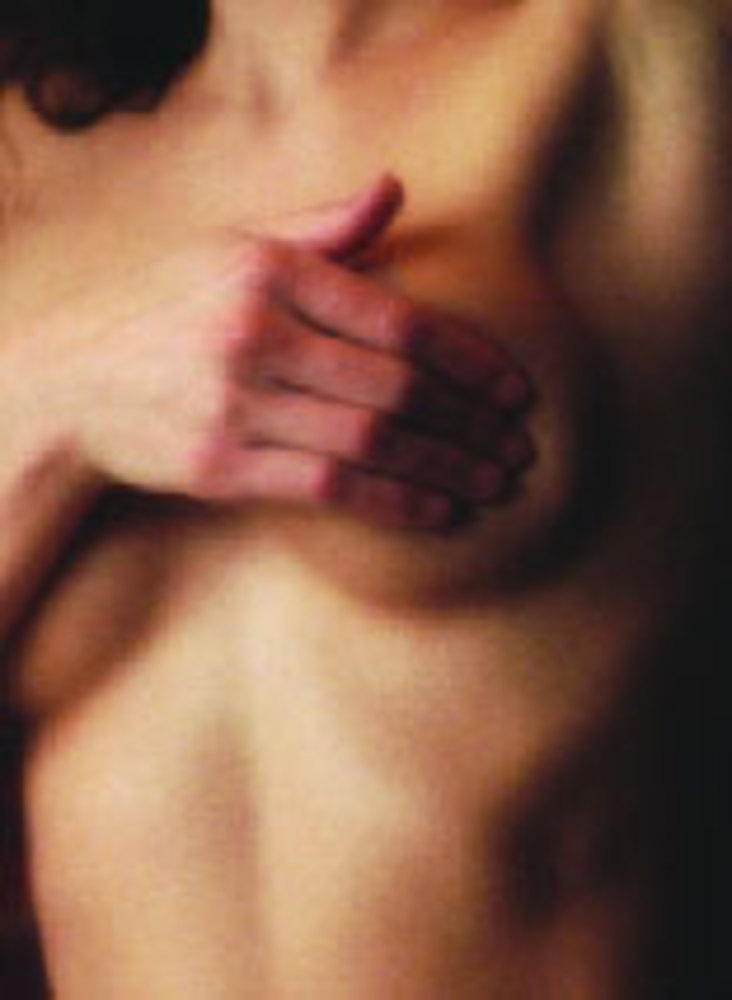 Now new research published in the journal Nature today from an international team, led by Cancer Research UK's Madalena Tarsounas in Oxford, Jos Jonkers in the Netherlands and Shridar Ganesan in the US, has discovered why these cancers may be resistant to chemotherapy and radiotherapy - as well as an intriguing link to the breast cancer gene BRCA1.
Now new research published in the journal Nature today from an international team, led by Cancer Research UK's Madalena Tarsounas in Oxford, Jos Jonkers in the Netherlands and Shridar Ganesan in the US, has discovered why these cancers may be resistant to chemotherapy and radiotherapy - as well as an intriguing link to the breast cancer gene BRCA1.
The faulty BRCA1 gene is found in hereditary breast cancer, where lots of women in the same family have the disease. Also, around 9 out of 10 triple negative breast cancers are in women with faulty BRCA1, so there's clearly a link. Sometimes these BRCA1-deficient cancers respond to radiotherapy and chemotherapy - particularly with platinum-based drugs such as carboplatin and cisplatin. But often the tumours develop resistance to treatment and start growing again. Tarsounas and her colleagues wanted to find out why.
The researchers started by looking at cells grown in the lab that lacked BRCA1. Contrary to what you might think, these cells actually don't grow well at all - it's the combination of faulty BRCA1 with other faulty genes that makes cancer cells grow. The researchers then used a clever trick to randomly knock out genes in the BRCA1-deficient cells, to hunt for genes that made the cells grow again.
They found several - but the most interesting one was a gene called 53BP1, which is normally involved in helping cells to repair damaged DNA. Then they went on to discover that while cells lacking just BRCA1 can be killed with cisplatin or radiotherapy, cells lacking both BRCA1 and 53BP1 were resistant to treatment. So this explains how these cancers may develop resistance to therapy.
The scientists also looked at more than 1,800 samples from breast cancer patients, analysing 53BP1 levels and other characteristics. They discovered that most triple negative cancers also had low levels of 53BP1, suggesting the gene was faulty. And 53BP1 was also faulty in most of the cancers from women with BRCA1 faults.
This research tells us that BRCA1-deficient triple negative breast cancers with low levels of 53BP1 are likely to be resistant to radiotherapy and chemotherapy. So this could possibly be developed into a test to help doctors to decide what sort of treatment to give to women with these types of tumours.
And if we can find out exactly how loss of 53BP1 causes cancer cells to become resistant to treatment, it might reveal new targets for drugs to improve the effectiveness of chemotherapy and radiotherapy and overcome resistance, which would help to save lives.
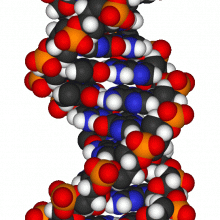
13:49 - Deciphering the Second Genetic Code
Deciphering the Second Genetic Code
Dr Yoseph Barash, University of Toronto
Chris - Also in the new this week, researchers in Toronto and in Cambridge have made a major breakthrough in understanding how DNA works. More specifically, how the same gene can produce different gene products in different types of cells.
To tell us more is Yoseph Barash from the University of Toronto. Tell us first, if you could Yoseph, what's the problem you've actually been grappling with - what are you trying to solve here?
Joseph - Basically the problem that we were handling if I put it in one sentence would be to figure out how alternative splicing works. Of course, that wouldn't mean much if I don't explain what alternative splicing is and why it is important. So, I'll start off by starting with what people do know and people do know usually about the genes and that they're coded in DNA molecules, and many people know that scientists just about a decade ago mapped the human genome and they found about 20,000 genes altogether in the human genome. What people usually don't know is that the same gene can actually code for different genetic messages in the form of messenger RNA molecules. And these different messages can operate quite differently in the cell.
 Chris - So in other words, in different tissues, genes which have the same genetic code can have a different effect by effectively chopping the gene up in a slightly different way, so it turns into a different recipe.
Chris - So in other words, in different tissues, genes which have the same genetic code can have a different effect by effectively chopping the gene up in a slightly different way, so it turns into a different recipe.
Joseph - Exactly. So instead of a one-gene one-product kind of model, we have a one-gene many products model and what we're trying to figure out is how this works. So, what is the code within the genetic code that tells the cell how, when, under what conditions, et cetera to perform these splicing variants.
Chris - So in a nerve cell, the same gene may do something completely different to a liver cell, but the big question is, how does it know it's a nerve cell or a liver cell and therefore to behave different?
Joseph - Exactly.
Chris - And how did you approach that?
Joseph - Basically what we did is interdisciplinary research that we started off by doing experiments and that was done at the Blencowe lab and we measured around 4,000 pieces, called axons, of genetic messages across 27 different mouse tissues. Then we analysed the data to figure out how these changes occur. So, the different inclusion or exclusion of these bits and pieces of the messages in the different tissues, how does it change? And then we went to the genome to figure out what is this code, what are the different components that determine these changes, so we can actually look at the genetic code and figure out if we just look at it, what would be the changes in say, brain versus liver as you suggested.
Chris - So in other words, by looking at many thousands of genetic sequences and doing this lots and lots of times in lots of different tissues, you can begin to tie together how a different gene gets cut up in a different way in a specific tissue, and then you can begin to work out what sequences are hidden in the genetic material that's making that happen.
Joseph - Exactly and that's the computer science part of the research - the machine learning part of the research.
Chris - So presumably, this is really important because what this will enable us to now do is when we want to do gene therapy on something, up until now, we've taken a very simple approach and said, "This gene turns into this product in a cell regardless of what cell type it is." So we just put the gene in and we'll get the product out. It hasn't always been as successful as we would've liked. Now, we're in a position to apply the discovery you've made which means that we can begin to ask, "Well, will this gene behave the way we think it will?" So presumably, your model will enable us to make predictions so that we can work out how genes will behave in different tissues.
Joseph - Exactly. So once you have that program, that model, then you can look at areas that you've never seen before, you've never measured in the original experiments, and use the program to tell you what's going to happen. You can also relate certain mutations to certain diseases, et cetera, and that's where a lot of the potential lies.
Chris - We know that cancer, killing one person in three, is a genetic disease. Does this mean that different cancers are going to behave differently in different tissues or that the genetics of cancer is going to differ between tissues because of what you found?
Joseph - This is one of these promising directions that we're going to do follow up research - dedicated research. So, instead of just looking at say, different tissues, we're going to look at different diseases and disease-versus-normal or subtypes of diseases, and as you've mentioned, different types of cancer et cetera, and concentrate on this. In the study already published, we concentrated on certain neurological diseases and show the relation between the code that we found and mutations in certain areas. So there's a lot of potential there definitely.
Chris - And just to finish off, you've done this in mice. Is what goes for a mouse, what goes for a person? Do the same messages hidden in the genetic sequence that make the cells chop genes up this way in mice also work in men?
Joseph - Right. So that's an excellent question. So first off, in the original paper, what we did when we analysed diseases, we analysed areas we know are conserved and we were able to relate the changes that we found using the mouse genome to diseases in the human. But of course, the next step is of course to analyse more data coming from the human. That's what actually we're doing now. So, this is sort of work in progress.
Related Content
- Previous Why haven't crocodiles changed?
- Next Does Beer Kill Brain Cells?










Comments
Add a comment